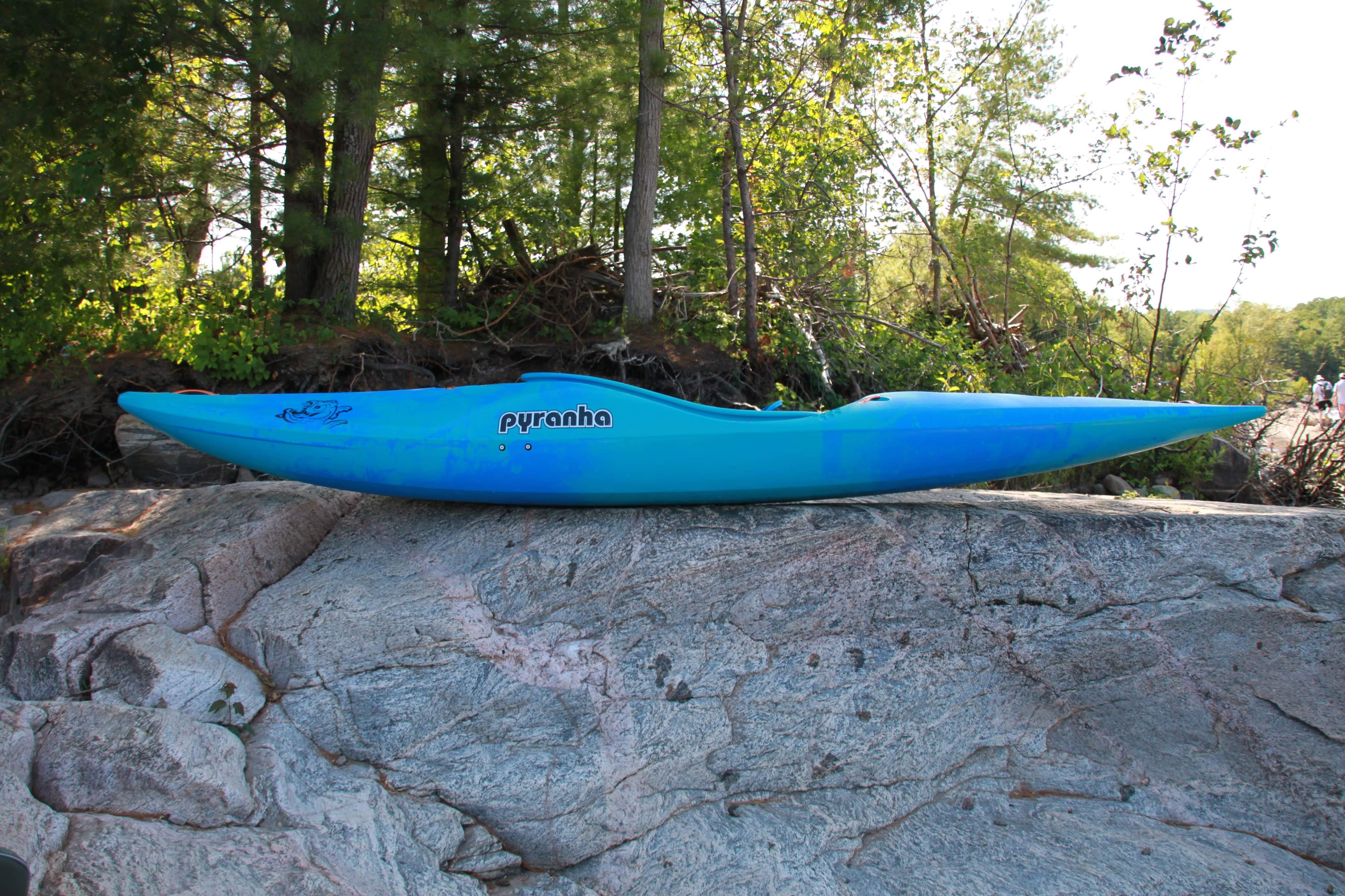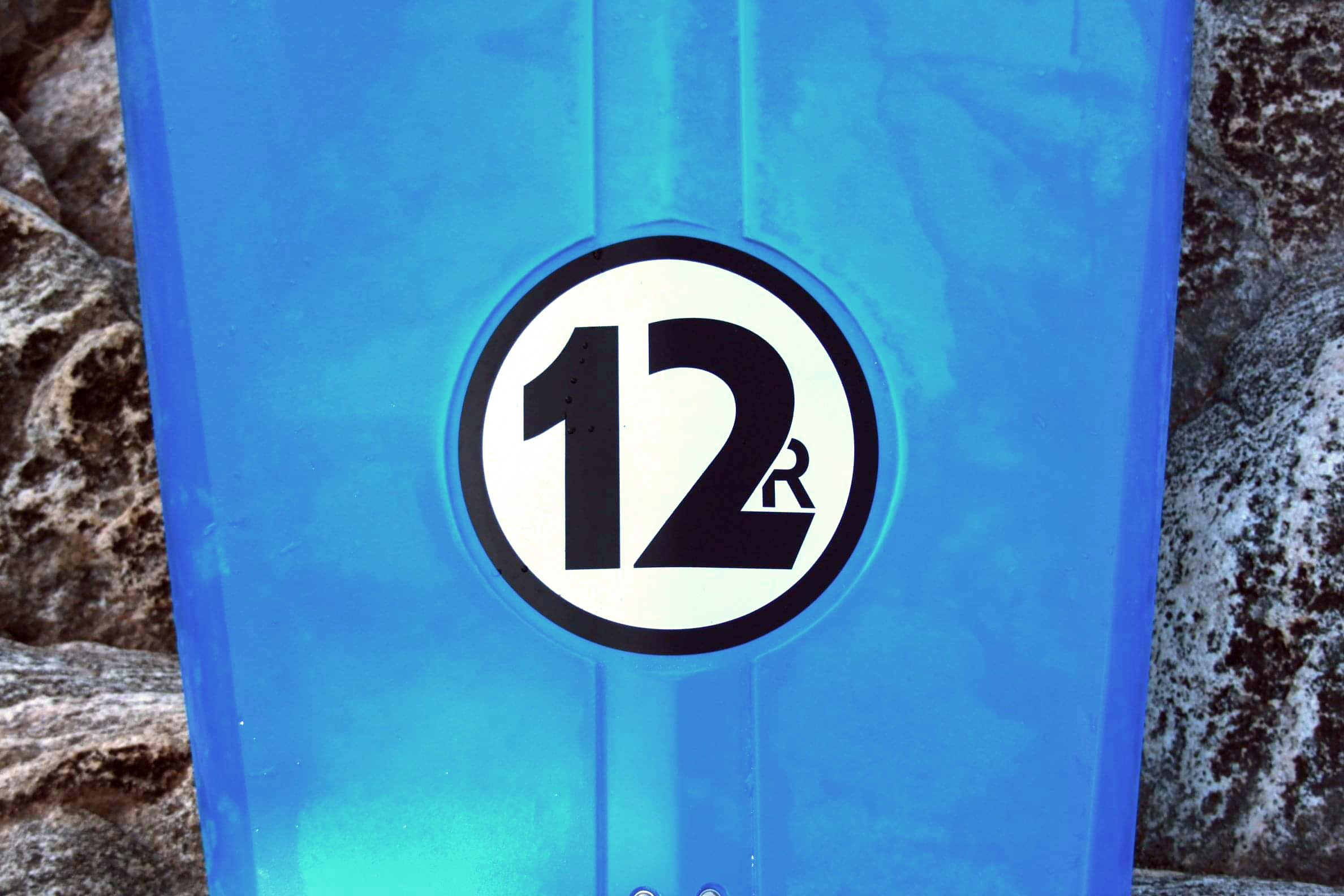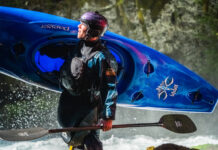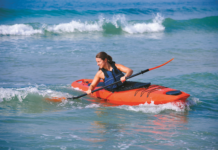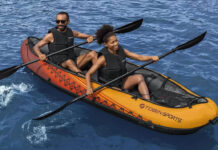I first heard about Pyranha’s 12R on April 1, 2017. I was soon disappointed to learn the launch of the new longboat was only an April Fool’s Day joke. I wasn’t the only one. For years, some of the U.S.-based Pyranha crew wanted to make a longboat based on the 9R, but they couldn’t convince owner Graham Mackereth to invest in the cost of a mold for such a seemingly niche market.
Pyranha 12R Specs
Length: 12 ft
Width: 24.5 in
Volume: 102 gal
Weight: 57 lbs
MSRP: $1,339
pyranha.com
More than half a year later, the team took to Kickstarter. What had jokingly been referred to as the “mythical unicorn of longboats” was suddenly a real possibility if Pyranha pre-sold enough of them. The first day, 60 people signed up. Within three weeks, one hundred 12Rs had been pre-ordered, and the boat moved into production for delivery in the summer of 2018.
Longboats aren’t just for the speed-hungry racing niche. These big boats are designed for big fun—they go ultra-fast and are equally at home tackling huge rapids or holding many days’ worth of gear. I already own a longboat, a Liquidlogic Stinger XP. As soon as I heard about the Pyranha 12R, I was intrigued and knew I wanted to paddle it and compare.
I caught my first glimpse of a 12R in the fall of 2018 at the annual Movember Whitewater Classic men’s health fundraising race on the Ottawa River. This was shortly after the 12R dominated the field at the23rd annual Green Race in North Carolina, taking third place and five of the top 10 spots. When the editorial team at Paddling Magazine hinted they’d be getting a loaner to review, well, I’m pretty sure I started drooling then and there.
The Pyranha 12R shares the longboat race category with the Dagger Greenboat, Liquidlogic Stinger and Jackson Karma UL. All four have very similar specs, with the 12R coming in at the second-longest (12 feet), second-widest (24.5 inches), highest volume (102 gallons), and the heaviest (57 pounds).
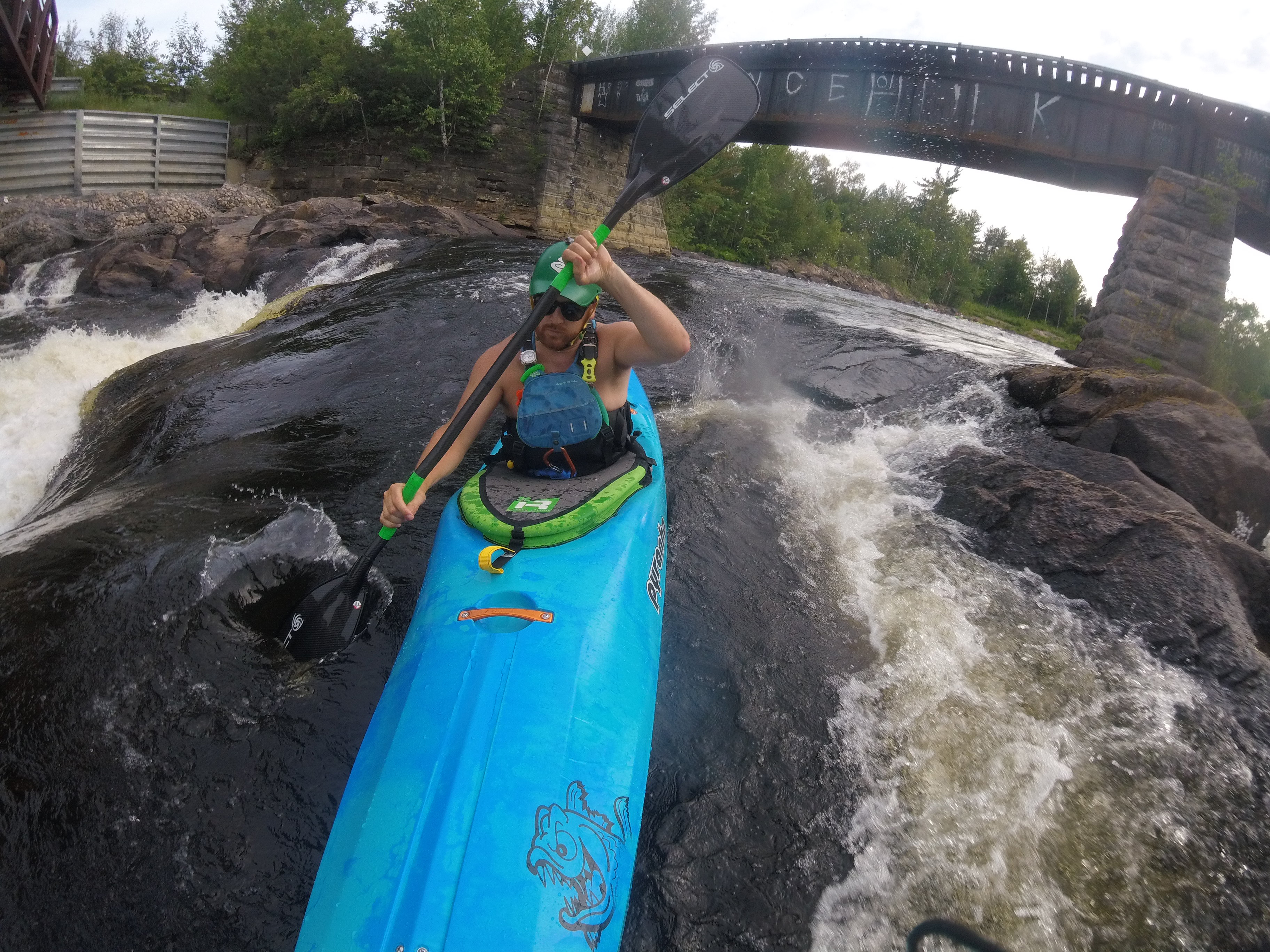
As I already have a few Pyranha kayaks and am familiar with the outfitting, getting the 12R river-ready was quick and easy. The 12R comes standard with Pyranha’s Stout 2 outfitting, which features upgraded hip pads and thigh grips. First, I installed the peel-and-stick foam pad for the full plate footrest. Then, I adjusted the footrest, added the two included seat shims, and added hip shims to fit. My favorite part of Pyranha’s outfitting pack—besides the Angry Fish Sponge—is the peel-and-stick foam pads and foam roll, which I use for adding padding where my kneecaps contact the hull. Why don’t all the brands come with this stuff?
In just 10 minutes, the boat was comfortable and fit me like a glove. The only thing I would change, as I have done in my 9R and Ripper, is add a large foam wedge to the footrest for a more relaxed ankle position.
The 12R, like its hugely successful Pyranha 9R inspiration, has a Swede form hull design, meaning the widest part of the hull is behind the paddler. This gives the boat numerous advantages over a symmetrical design on the river, including improved tracking, quicker turning when on edge, and a more efficient stroke due to the narrower width at the cockpit. It also increases downriver speed by displacing water efficiently and minimizing drag.
Despite both boats having almost identical specs, I was surprised by how different the 12R handled compared to my Stinger on the water. After a few laps down my local run, I felt like I had the boat dialed in.
The 12R is exceptionally stable; I was able to edge the boat enough to get my kidney into the water without needing a paddle for support or feeling like I was going to tip over. On flatwater, the 12R didn’t feel as fast as the Stinger, but with its slightly wider width and shorter waterline as a result of its shorter length and increased rocker, I am not surprised. And, of course, flatwater speed has little to do with how quickly it will go downriver.
Paddling through rapids, I found despite significant bow rocker, wave deflectors, ample volume and a sloped deck, the bow didn’t rise out of the water after plunging through a wave or hole as quickly as I thought it should. This might be a disadvantage of the Swede-form shape—with the center of buoyancey behind the paddler, the stern has leverage to hold the bow under when coming down the face of a wave or hole. I just needed a change in my paddling style.
I generally choose the straightest line down a rapid while avoiding the largest features, and crash my way down, plowing through anything in my path. The 12R has a much more defined edge and more continuous rocker and is much more agile because of it. I can rapidly change direction and carve a turn on edge. Using this to my advantage, I simply adjusted my line, edging the boat to weave around features to keep the bow dry. The maneuverability of the 12R also made catching eddies—something I don’t even bother trying in my Stinger—easy and fun.
Paddling the Pyranha 12Rwas a blast. If #fastisfun has the mantra of the nine-foot creek race category, then #fasterisfunner with the 12-footers.
This one goes to 12. | Photo: Phil Kompass



